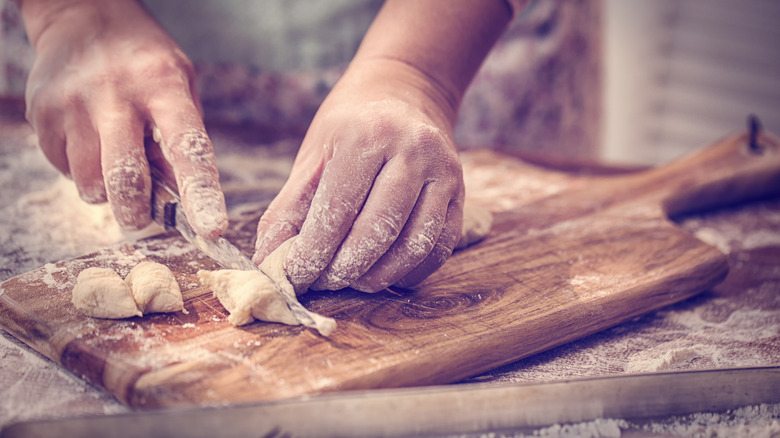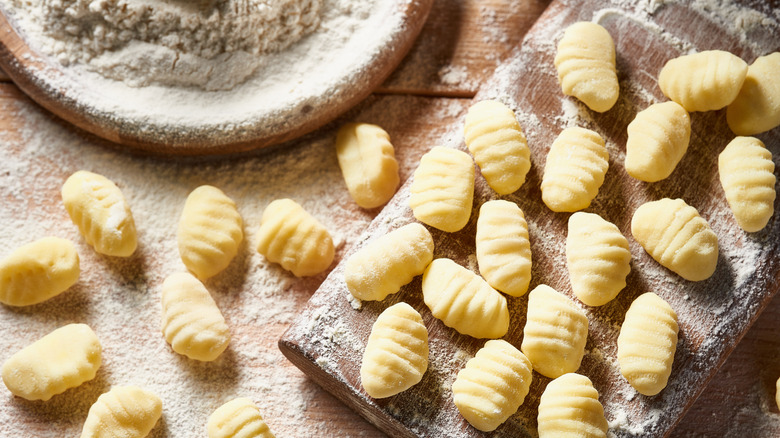The Flour Mistake You're Making With Homemade Gnocchi
"What if pasta was also potato" is a question only a starch-mad genius could come up with, and thank goodness they did. A good plate of gnocchi is a timeless comfort food, and it's easier to make at home than you might expect — in fact, it only takes two ingredients. Just make sure to remember one simple fraction to prevent a common and ruinous mistake when combining the flour and potato: ⅓.
With so few ingredients, it's important to get the ratio between them correct, and for gnocchi, the magic rule is to add ⅓ as much flour as the amount of potato you're using. Less and you risk the gnocchi falling apart as it cooks. More and you lose the fluffy texture that makes gnocchi so appealing, instead getting an overly chewy or gummy bite. To ensure the perfect amount of flour, save ¼ of the starting quantity when initially incorporating it, and then add the final quarter bit by bit to the mixture, constantly checking the texture.
Make sure to wait until the potatoes have cooled to the point that you can comfortably work them with your hands before peeling them and adding the flour. If the potatoes are too hot, the flour will become incorporated at a quicker rate, and it can be difficult to determine if you're adding enough. You don't want them to be cooled completely, just warm to the touch.
Other mistakes to avoid when adding flour to gnocchi
When deciding which flour to choose, there are two commonly accepted varieties. Tipo 00 is an Italian low-protein flour that is typically used for pizza dough, but will also create melt-in-your-mouth gnocchi, thanks to its fine, powdery grind. If you don't have access to Tipo 00, all-purpose flour is a perfectly acceptable alternative. Since potatoes are important, too, when deciding what kind of potatoes to use in your gnocchi, opt for high-starch varieties, and you can even use boxed potato flakes to speed up the process.
Overworking the dough is a common mistake that causes gnocchi to become tough and unappealing. There are two reasons for this: over-kneading flour causes the gluten molecules to lose their elasticity, which is the opposite of what you want in gnocchi. Furthermore, treating potatoes too roughly causes the cells to cede starch, which makes for a chewy, gummy concoction.
Finally, make sure the potatoes don't hold too much moisture when incorporating the flour. Avoid young potatoes, as they hold more water, and be sure to drain your potatoes thoroughly. Even if you start with the correct ratio, using potatoes that retain excess water will necessitate adding more flour, which will create a chewy gnocchi. One way to avoid this is to bake the potatoes rather than boil them. You can even bake them over salt, which further desiccates the potatoes and ensures they are perfectly dry when it comes time to add your flour.


